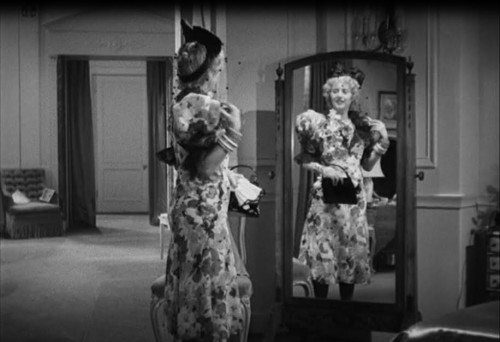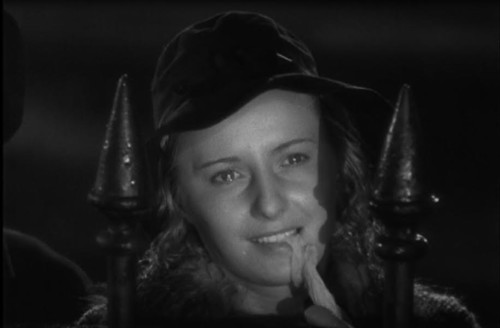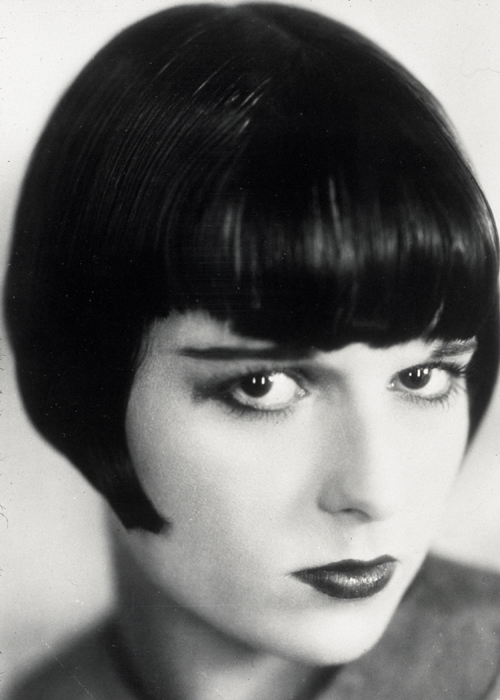This guest post by Rebecca Willoughby appears as part of our theme week on Unlikable Women.
Melodrama is a film genre that can get a bad reputation: overblown emotions, sweeping musical scores, a lot of “drama.” In its heyday in the 1950s, these films were primarily marketed to women, and (perhaps disparagingly) known as “weepies.” But melodrama is also an island in old Hollywood—an island full of complex, flawed women, the kinds of characters viewers can simultaneously love and hate, dynamic creatures who inspire and who are also cringe-worthy.
For me, one of the best examples of this is King Vidor’s Stella Dallas (1937). IMDb gives this one-line summary of the film: “A low class woman is willing to do whatever it takes to give her daughter a socially promising future.” Film scholar Jeanine Basinger, author of A Woman’s View: How Hollywood Spoke to Women 1930-1960, takes a more sympathetic tone, calling Stella Dallas a “portrait of a poor girl who marries out of her class,” and notes that film icon Barbara Stanwyck’s performance as Stella is one of “great depth.” I would tend to agree with Basinger, but I must point out that the audience’s relationship to the eponymous woman is a complicated one.
Rather than an elegant, wealthy, and charismatic, Stella is a shameless social climber with no real “taste.” She comes from a ramshackle, cracker-box house and a factory-worker family, where Father and Brother both work at the local mill. Her only obvious female role model is her sallow-faced mother, who seems at once endlessly, admirably sacrificing and a woman who has had the life completely sucked out of her. Stella resists being anything like her mother. She puts little effort into making her brother’s lunch every day, and is instead invested in her looks, her clothes, and her culture (this last illustrated superficially by her enactment of reading a book—India’s Love Lyrics— as mill workers pass by her house). Eventually, Stella identifies down-on-his-luck former millionaire Stephen Dallas (John Boles) as her romantic conquest, and does everything in her power to land him for a husband who will take her away from her humble origins.
But class differences run deep. Though Stephen falls for Stella, perhaps because of her innocence and earthiness, she is unambiguous about wanting to make herself “better,” a cloudy idea she has that includes knowing the “right” people, going to the “real” places, as well as learning how to “talk like” those aforementioned people. The film makes it clear that Stella and Stephen are mismatched from the start—after their wedding and the subsequent birth of their daughter, Laurel, Stella can’t wait to get back to the River Club, and dance the night away with some high-class friends. Starting at this point, Omar Kiam’s costumes do their best to visually identify Stella as a gaudy parody of all things well-bred—she appears in all manner of spangle and print, usually together, and Barbara Stanwyck’s padded physique seems to be literally bursting at the seams of each ensemble. She is excess personified. Embarrassed by her flashiness and uncouth behavior, Stephen recoils from the relationship, finally taking a promotion that keeps him in New York City. Stella welcomes the separation, and yet one of the consequences of this move seems to be that Stella transfers her desire for upward mobility onto Laurel.
So why don’t we like her? What’s wrong with a mother wanting her daughter to have all of the best? Part of what makes Stella unlikeable is her effect on Laurel (played as a young woman by Anne Shirley). On the occasion of Laurel’s 16th birthday (for which Stella has made her daughter a beautiful, appropriate dress—why can’t she apply this savvy to her own clothes??) Stella takes a train to the city to obtain fancy party favors and table settings. She makes this trip in the company of good-hearted but loud, brash Ed Munn (Alan Hale, Sr.), who has lost some of his own formerly respectable class status through gambling disasters; as one country club attendee says, “He’s involved in horse racing.” He’s also clearly infatuated with Stella, though she rebuffs his affections and says, “I don’t think there’s a man living could get me going anymore.” Instead, she intones, all her energy is bound up in raising Laurel—both in the traditional sense of her upbringing, and in “raising” her social status above Stella’s.
Munn and Stella’s antics on the train are then observed by Laurel’s upright teacher and the mother of another girl invited to Laurel’s birthday party. Both of whom immediately pass judgment on the household, and by extension, Laurel, because of Stella’s behavior. The result is that no one attends Laurel’s party, which ends up being just the first in a series of unfortunate events, documented by Basinger in her writing on Stella Dallas, that occur when Stella’s class clashes with the class of those she strives to emulate. These repeated conflicts make for a number of scenes in the film that, as Basinger has also asserted, are painful to watch. Our emotions are in conflict: Stella’s aims are noble, her execution hopelessly flawed. It’s hard to like her when she’s so inept, impossible not to sympathize because her purpose is so noble. Class culture is indicted when viewers are asked to identify with Laurel, even when Laurel herself isn’t on screen—we understand the gap between the young woman’s intrinsic conservatism (which is deployed as a marker of upper-class behavior) and Stella’s inescapable and tragic inability to embody this value. This gap has a profound effect on how Laurel is perceived by the rest of the world, further inciting our sympathy for both women. Stella also articulates her own selfishness in several of these scenes, desiring to dance, shop, and be seen among these “right” people, before she realizes the she is not a blessing for Laurel, but a curse.
There’s a turning point in Stella Dallas that may or may not redeem Stella in the eyes of the audience. After Laurel has narrowly avoided an awkward scene with her mother in an ice-cream parlor, the two take a sleeper back to their home. As each of them pretends to sleep, they overhear other passengers talking about Stella’s larger-than-life appearance at the country club they’ve just left. The gossipy biddies agree that Laurel’s boyfriend will never continue their relationship when he’s made aware of Laurel’s lineage, and Stella slowly becomes aware that she’s a detriment to everything she has ever wanted for Laurel.
For the rest of the film, Stella forgets about her own desires and moves heaven and Earth to get Laurel away from her. This is simultaneously the best thing she could do to achieve her goal of propelling Laurel into the upper-class, and depicted as tremendously cruel for Laurel herself—another reason that, even in her glory as a “sacrificial mother,” there can exist a complicated seed of dislike for Stella. Though she eventually succeeds, it’s at the cost of sabotaging her relationship with Laurel forever, and never seeing her again. In the final scenes, we understand Stella’s plan has been both successful and monumentally hurtful for her daughter, who continues to love her mother in spite of Stella’s rough rejection of Laurel and disappearance from her life.
It’s only in the final scene of the film that we are given the green light on Stella, when we’re finally allowed to wholeheartedly admire her for what she’s done. Stella stands outside a fancy private club where Laurel is about to wed her sweetheart, gathered with other urchin-like onlookers, gawking at the beautiful couple just inside a large picture window. She begs a policeman to remain as he shoos these others away; “I just want to see her face when she kisses him,” she pleads. As the vows are solemnized, Stella’s eyes fill with tears, and she performs a signature act that has punctuated Stanwyck’s performance throughout the film—at moments when she is most conflicted, uncomfortable, and troubled, she reaches for her mouth, worrying her fingers, chipping at her front teeth with a fingernail. Here, she twists a handkerchief with her teeth as she looks on, her now much sleeker-looking physique still bursting, this time with pride. We want to applaud and weep at the same time—Stella’s sacrifice is so terrible, its goals so lofty. Finally, we can like her. But only after relinquishing nearly everything that gave her purpose.
Audiences are hard on women like Stella Dallas. Culture’s ideas of motherly perfection, class values, and models of “acceptable” behavior force them into molds they were not meant to fit in. If anything, Stella Dallas points out the most exacting of those ideals in us, the viewer, and criticizes our potential dislike of Stella. The film’s saving grace is that it allows us, and Stella herself, to leave the film not broken, but stronger for the fight.
Rebecca Willoughby holds a Ph.D. in English and Film Studies from Lehigh University. She writes most frequently on horror films and melodrama, and is a Visiting Assistant Professor of English at Bucknell University in Lewisburg, Pennsylvania.











